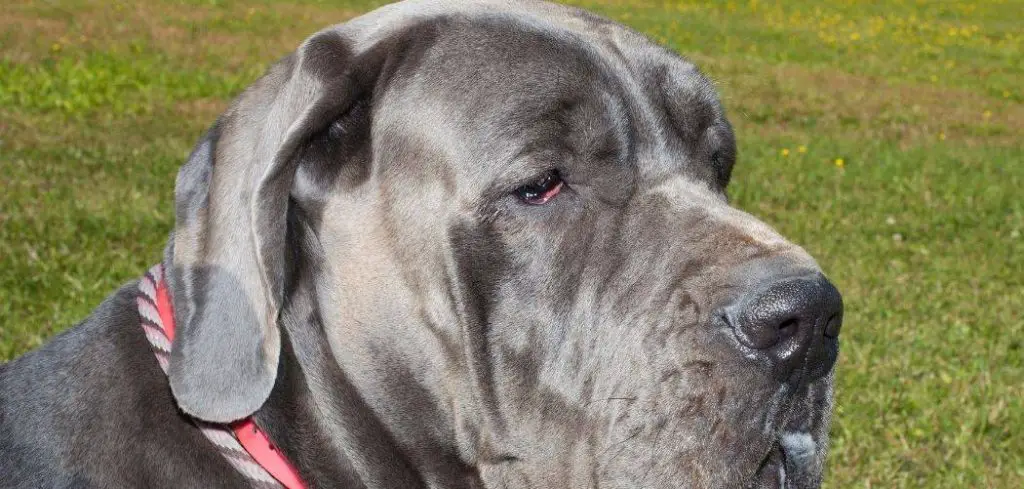When your dog has a red eye and refuses to eat, it can feel like something serious is going on. These symptoms can indicate anything from minor irritation to more concerning health conditions that impact your dog’s overall comfort and well-being.
We outline the common causes of a dog’s red eye and not eating, what you can do at home, and when to seek veterinary help.
Dog Eye Red and Not Eating — Why It Happens
A red eye paired with loss of appetite is usually a sign that your dog is experiencing pain, infection, or systemic illness. Conjunctivitis, foreign objects in the eye, corneal ulcers, glaucoma, and allergies can all cause eye redness, while illness or discomfort may lead your dog to stop eating. Sometimes, the root cause is an underlying issue affecting both the eye and your dog’s energy or appetite — like a fever, infection, or trauma.

Common Causes of Dog Eye Red and Not Eating
Conjunctivitis (Pink Eye)
Conjunctivitis is one of the most common reasons for a dog to have a red or swollen eye.
This condition involves inflammation of the eye’s mucous membranes, causing visible redness, discharge, and squinting. The irritation can be painful, and your dog may become lethargic or disinterested in food due to discomfort or fever, especially if an infection is involved.
Corneal Ulcers
Corneal ulcers are painful abrasions or sores on the surface of the eye.
They often result from trauma, debris, or untreated dry eye. Dogs with corneal ulcers may squint, paw at the eye, or avoid bright light. The intense discomfort and possible infection can suppress their appetite and make them seem withdrawn.
Glaucoma
Glaucoma causes a dangerous increase in pressure inside the eye.
This can lead to a red, bulging eye and significant pain. Dogs with glaucoma may act lethargic, disoriented, or avoid eating due to nausea or pain. Glaucoma is an emergency condition — rapid treatment is essential to prevent blindness or systemic complications.
Read more: Dog Swollen Eye and Not Eating (Why it might be more than just an eye issue)
Eye Trauma or Foreign Body
Something as simple as a grass seed or scratch to the eye can lead to inflammation and redness.
If the eye has been injured, your dog may blink excessively, avoid touching the face, or refuse food due to pain. Trauma can sometimes affect the eye socket or even cause headaches that suppress appetite.
Systemic Infection or Fever
Red eyes can also be a secondary symptom of an internal illness.
Respiratory infections, fevers, or generalized inflammation may cause eye redness while also affecting energy and appetite. If your dog’s eye appears red along with signs like warm ears, fatigue, or shivering, there may be a bigger issue going on than just an eye problem.
Allergic Reaction
Environmental allergies or food reactions can lead to both red eyes and reduced eating.
Irritants like pollen, mold, or certain ingredients may cause your dog’s immune system to react, leading to redness, tearing, sneezing, or itchiness. Discomfort from allergies or nausea from food intolerance may lower your dog’s interest in meals.
What to Do If Your Dog Has a Red Eye and Isn’t Eating
First, gently inspect your dog’s eye for visible signs of debris, discharge, or swelling — but avoid touching or trying to flush the eye without guidance.
Keep your dog calm in a quiet, dimly lit space to reduce eye strain or agitation. Offer soft, bland food like boiled chicken and rice to see if they’ll eat something gentle on the stomach.
Avoid using any human eye drops or medications without veterinary approval. If you have an e-collar (cone), consider using it to prevent your dog from rubbing or scratching the eye, which can make it worse.
Ensure your dog stays hydrated. If they won’t drink water, try adding low-sodium broth to their bowl to encourage fluid intake.
Monitor for additional symptoms like swelling of the face, coughing, or vomiting, which may point to a more systemic issue.
When to Call or Visit Your Vet
Seek veterinary attention promptly if:
The eye appears cloudy, bulging, or oozing discharge
Your dog is squinting, rubbing the eye, or avoiding light
Appetite doesn’t return within 24 hours
You notice lethargy, fever, or breathing issues
There’s no improvement or the eye gets worse
Eye issues can escalate quickly and lead to lasting damage if untreated. When paired with appetite loss, it’s best to err on the side of caution.
Read more: Dog Conjunctivitis and Not Eating (Here’s how to help)
Key Takeaway
When your dog has a red eye and isn’t eating, it’s not something to ignore. These symptoms may signal pain, infection, or a deeper health concern.
Act quickly to keep your dog comfortable and consult your vet if symptoms persist or worsen. Early care can protect your dog’s vision, comfort, and overall health.
